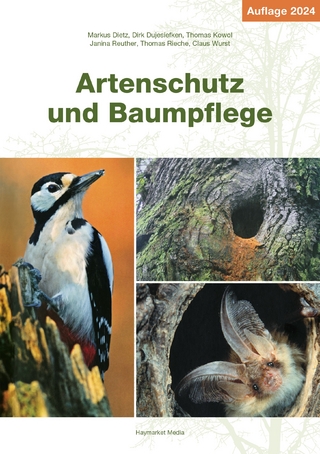
Food Planet Future
Papadakis (Verlag)
978-1-906506-74-2 (ISBN)
- Noch nicht erschienen
- Versandkostenfrei
- Auch auf Rechnung
- Artikel merken
Food Planet Future takes the reader on an extraordinary visual tour of everyday foods and in the process, connects us more deeply to the world we help to shape. It draws upon art, research, and innovative practices to reimagine the tangled crises of food security, climate change, and biodiversity loss. Food Planet Future invokes awe and wonder and inspires action to taken on our Earth’s behalf.
Robert Dash is an educator, naturalist and photographer whose work features the complex textures and patterns of micro nature. His photographs have been published by National Geographic, TIME, Lenswork, and Buzzfeed. They have appeared in galleries and juried shows in the US and internationally. He was shortlisted for the Visura/UPI Grant for Storytelling On Climate Change, 2018. His images traveled as part of the international outdoor exhibition The FENCE. In 2017, Dash authored On An Acre Shy of Eternity, Micro Landscapes at the Edge, which won the Nautilus Book Awards Gold for Photography and Arts, and Best of Self Published. In 2016 he presented the widely-viewed TEDx lecture, "The Intercourse of Nature." His current traveling exhibition about food and climate change is entitled "Food for Thought/ Micro Views of Sustenance: Threats and Prospects."
FOREWORD, Thor Hanson
PREFACE, Robert Dash
INTRODUCTION, Robert Dash
ANATOMY OF A MONTAGE
PERILS AND PROMISE
AGAVE Desert Agroforestry and Carbon Capture
AGAVE 2.0 The Billion Agave Project
ASPARAGUS Perennial Vegetables
AVOCADO New Cultivar, and Searching for Sustainable Fruit
AZOLLA A Floating Fern That Once Removed Half of All Atmospheric Carbon
AZOLLA 2.0 High Protein, Affordable Livestock Feed
BAMBOO The Plant With Countless Uses
BEAN “Poor Man’s Protein”, Climate Friendly Food
BEAN 2.0 New Seed Bank With 38,000 Bean Types
BIOCHAR Ancient Practices Build Microbial Hotels in Soil
BLUEBERRY Crop Waste Products and a Circular Economy
BUCKWHEAT Restoring Food Security in Remote Villages
BUMBLE BEE Indispensable Pollinators With Mushroom Friends
CACAO Intercropping With Other Species
CACAO 2.0 Reclaiming Degraded Lands
CATTLE The Great Meat Debate
CATTLE 2.0 Carbon Capture and the Practice of Silvopasture
CELERY Strategies to End Food Waste
CHESTNUT Return From Oblivion
CHIA Healthy Seeds and Plant Chemistry Treasures
CHIA 2.0 Levity Is Its Own Kind of Nutrient
COCONUT Making Use of Crop Waste
CORN and Crop Wild Relatives
COVER CROPS Fava Beans, Green Manure, and Soy Alternatives
COVER CROPS 2.0 Keep Soil Covered, Keep Roots in the Ground
CRICKET AND PEA PROTEIN Climate Benefits of Vegetable and Insect Protein
FLAX Plants That Feed and Clothe Us
FOREST GARDENS Borage and Multi-Layered Gardens
FOREST GARDENS 2.0 Senegalese Forest Gardens Reclaim Desert Lands
GINKGO STOMATA Climate Stories on a Geologic Scale
HAZELNUTS and Agroforestry
HAZELNUTS 2.0 Perennial Woody Crops Versus Annuals
HEMP Plant Protein
HEMP 2.0 Fast-Growing Building Insulation
HOPS Climate Stress, Beer, Biotech
INDIGENOUS FOODS Camas Lily: A Hidden Treasure
INDIGENOUS FOODS 2.0 Cultural Burning Practices
JAPANESE KNOTWEED and Invasive Species
JAPANESE KNOTWEED 2.0 Invasive Species as Climate Assets
KALE The Mixed Climate Record of Organics
KELP Restoring Great Undersea Forests
KELP 2.0 Nutritional and Climate Benefits of Kelp Farms
KIWIFRUIT Green, Gold, and Contested
LACE LICHEN Medicinal Uses, Air Quality Indicator
LAVENDER Perennial Benefits
LETTUCE Breeding Resilient Varieties
LETTUCE 2.0 Microgreens and Hyperlocal, Nutrient-Dense Vegetables
MILLET Ancient, Drought-Tolerant Food
MILLET 2.0 Keeping Village Food Traditions Alive
MUSHROOM MYCELIUM Extraordinary From Every Angle
OLIVE Crop Migrations Prompted by Climate Stress
PLANKTON Tiny Plants That Produce Half The World’s Oxygen
PLANKTON 2.0 Dust, Diatoms, and Carbon Capture
POLLINATORS Insect Population Challenges and Biomimicry Innovations
POTATO Crop Wild Relatives Increase Resilience in Peru
POTATO 2.0 A Long Tradition of Potato Guardians
QUINOA Ancient Foods in a Modern World
QUINOA 2.0 Bringing Healthy Foods to the Wide World
RICE An Unexpected Methane Factory
RICE 2.0 Threatened by Salt, but Options Exist
ROCK DUST and Carbon Capture
ROCK DUST 2.0 Turning Mining Waste Into Locked-Up Carbon
ROOT CROPS Carrots and Crop Wild Relatives
ROOT CROPS 2.0 Agrivoltaic Solar Gardens
SALICORNIA The Promise of Saltwater Agriculture
SALMON Alternatives to Destructive Aquaculture
SALMON 2.0 Dam Removal and River Rewilding
SOIL The Keys to the Kingdom
SOIL 2.0 Decay is a Steamy Affair
SOY BEAN Powerful Laws Help To Reduce Soy-Related Deforestation
SOY BEAN 2.0 Prairie Strips, Water Retention, and Reducing Dead Zones
SUNFLOWER Crop Wild Relatives and Perennial Wannabes
TOMATOES and Their Crop Wild Relatives
TOMATOES 2.0 570 Million Smallholders Grow 30% of Our Food
TREES WITH EDIBLE LEAVES The Promise of Tree Vegetables
TREES WITH EDIBLE LEAVES 2.0 Moringa’s Multivitamins Grow on Trees
TURKEY TAIL MUSHROOM Immune Support and Reduced Wildfire Threats
WHEAT and Other Crops Move Towards the Poles
WHEAT 2.0 Kernza®, and the Dream of Perennial Grains
ARTIST’S PROCESS
BIBLIOGRAPHY
ABOUT THE AUTHOR
| Erscheint lt. Verlag | 9.4.2024 |
|---|---|
| Verlagsort | Newbury |
| Sprache | englisch |
| Maße | 254 x 254 mm |
| Themenwelt | Naturwissenschaften ► Biologie ► Ökologie / Naturschutz |
| Technik ► Lebensmitteltechnologie | |
| ISBN-10 | 1-906506-74-4 / 1906506744 |
| ISBN-13 | 978-1-906506-74-2 / 9781906506742 |
| Zustand | Neuware |
| Haben Sie eine Frage zum Produkt? |
aus dem Bereich


